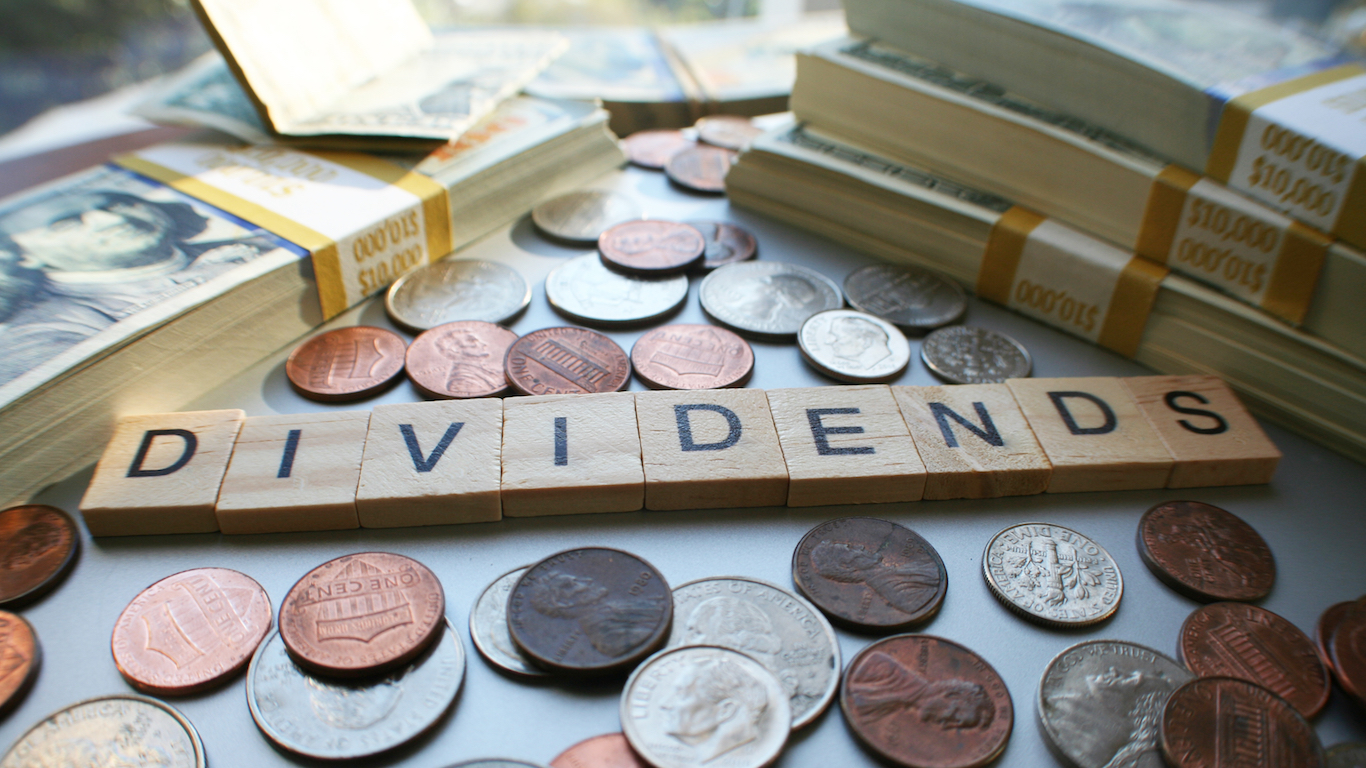
It may seem hard to imagine that it has been 10 years since the United States was in the grips of the financial crisis. The crisis is over and the bull market has continued to thrive in 2018, but this run-up in stocks is also now closing in on 10 years old. Many investors remain scared about the next market correction becoming a market crash, and there are many investors who were too deeply scarred during the financial crisis. Many investors have stayed in bonds and earned very low returns during what the history books are likely to call the “Great Recovery.”
With U.S. stocks valued at all-time highs overall, maybe those investors who still hate stocks or who think bonds pay too little should look into alternative forms of investing. This may seem like a crossover for generating additional income, but alternative investments also can generate occasional windfalls that can help the army of Americans who are short of their retirement goals catch up. There are millions of Americans who make money outside of just buying stocks or bonds. Some alternatives to traditional investing can be quite safe. Others can be quite risky or come with many complications.
24/7 Wall St. has outlined 10 alternative investing strategies that the public can use. While there may be restrictions, many forms of alternative investments may even be able to be used for retirement accounts like 401(k)s and IRAs.
Before thinking about all the strategies that can be used outside of investing in stocks or bonds, note that not all alternative investment strategies are appropriate for every person. Those who cannot adequately pursue their strategies might just end up wasting money that they never get to see or use again.
Let’s consider what happens when it comes to retirement. No matter what, it does take money to live on even after your paychecks stop coming. Most Americans have under-saved when it comes to adequate retirement as 401(k) investments. Social Security checks also fall short of what most people need to live. And most people no longer have access to traditional pension plans.
One theme that should be more than evident here is the timing and liquidity of an asset. Investors can buy or sell stocks and most bonds in a few seconds with limited effort. Alternative investments can mean years of your capital being locked up, and there may be penalties that have to be paid to exit alternative investments.
Every form of alternative investment comes with risks, and just like in regular investing there is no such thing as a free lunch. We have included at least some of the pitfalls and risks that must be considered in each individual asset class.
Here are 10 alternative investment strategies that are not in publicly traded stocks and most bonds.
1. Property and Real Estate
You have probably heard the phrase “They are not making any more land” before. That is by and large true. Investing in real estate has helped make many millionaires in America over the years. Some land investors would never dream of buying stocks or bonds because they have done so well. Whether you are a landlord owning houses or apartments or renting to businesses, the goals are generally common: get ongoing income, having tenants pay off the mortgage or note over time and ultimately recoup a large amount of equity when the property is sold. Outside of traditional land, there is also timberland, farming, hunting leases and many other options.
The downside or cons of land and real estate need to weighed. First and foremost, it generally requires a lot of money to buy most land and real estate. Land and real estate can be rather illiquid, and it could take years to sell. Land can also sit vacant or unimproved for many years. Land owners also get to pay property taxes and often have to pay for improvements or maintenance, all of which can add up quickly and over time.
2. Annuities
If you want to get as wide of a range of reactions as you can imagine, go ask people who invest money or who have assets what they think about annuities. Generally speaking, annuities are supposed to be relatively safe cash flow payments made annually. Annuities come in many styles, ranging from immediate to deferred, and they can be fixed or variable annuities. And there are many variations in each class. Investors often use annuities to help with cash flow needs, and they are often more than willing to sacrifice upside for the assurances and safety of principal. Annuities also can act as a shield for assets.
The risks of annuities are numerous, and some people have made their living advocating against people buying annuities. There can be issuer credit risk. There also can be, and often are, suitability issues. Some annuities can have such sky-high fees and commissions that some people might think the annuities are just there to rip off unsuspecting investors. Many people do not fully understand annuities, even those who purchased them.
3. Private Companies and Operating Businesses
Millions of Americans own small businesses. Most of these tend to be in services, but they can be manufacturing businesses. There are many business brokers out there to help investors find small businesses to own. And many small businesses are bought and sold directly via friends or family. The point is that you can own a private company or own many of them to help build your wealth over time. These might include owning a gas station, convenience store, small hotel, lawn or pool care company, car wash, widget manufacturing company, or books and record-keeping company. Many people who buy private companies prefer to buy a franchise as well with a set cost, a proven track record and an expected return. Franchises can be easier to sell down the road than many standalone companies. Franchises also can be considered “cash cows” because they kick off so much income to the owners.
The risks of investing in private companies and other operating companies are numerous. They can take years to sell again or they might never be able to be sold. Another pitfall is that someone has to run the business each day. Many businesses also have too much dependence upon the founder or prior owner, so someone else coming along later might not have an ease of dealing with customers after a change of control. There is the added risk of having to deal with employees and operating costs, which can become more expensive over time. Paperwork, taxes and regulations often scare off what might have otherwise been passive business owners.
4. Art and Collectibles
Millions of dollars have been spent on just one Picasso or Van Gogh painting. Rare antiques and artifacts can sell for hundreds of thousands of dollars. And certain sports memorabilia can be highly sought after. There are other forms of art and collectibles that some people have made a fortune in beyond owning Babe Ruth or Honus Wagner cards. Think about the first Superman comic book, or very old manuscripts and autographs. There are also stamps and rare coins to consider. These all fall under the arts and collectibles category, and they are generally bought and sold by people who already have lots of money.
One of the biggest risks of owning art and collectibles is that beauty is in the eye of the beholder. It is also a game in which the owner has to hope someone else values it even more in the future than they do. Art and collectibles can be very illiquid, and a seller down the road may take all the profit just selling it for you. There are also many fakes, replicas and forgeries being sold as “the real deal” to unknowing buyers. Knowing the pedigree and provenance is important as well. If an item was stolen or if someone was swindled out of it, then they can come after you to surrender it. Collectibles as an asset class also is generally taxed at a 28% rate for the profit upon the sale.
5. Royalty Income Streams
Most investors do not know that individuals, just like sophisticated institutional investors, can own streams of royalty income. In modern days people might immediately think of royalty payments tied to oil and gas. The reality is that there are many royalties that can be invested in. It is possible to invest in royalty payments tied to gold mining, music, patents or copyrights, or even in films and TV. And some investors have even bought royalties tied to clothing lines. Another new royalty stream investment that is available is investing in the rights to future income of athletes. There are even exchanges and venues for people to buy and sell royalties.
Perhaps it sounds fun just owning streams of royalty income. These can be very lucrative, but they can also be duds. Many athletes, musicians, brands, oil wells and the like simply fizzle out or die. Some royalties on the future sales do not live up to expectations. Another risk is that there can be legal disputes over what real sales were to base royalties on or what the real income levels were.
6. Gold and Silver … or Even Cryptocurrencies
The price of gold and silver has gone sky-high and come back down to earth over time. Gold has a history that goes back centuries and even for thousands of years. The shiny yellow metal has been sought after since the dawn of time. It is also a key holding of central banks, and probably every wealthy person in the world has been told over and over that they have to own some gold. Gold or silver can easily be bought and sold now in the financial markets, online or at gold exchange stores. The same issues exist for people investing in silver.
Gold and silver can come with risks that might not normally be thought of. Industry and technology keep finding new replacements that are far cheaper to use. When gold gets too expensive, they use less gold in making jewelry. Neither will ever pay a dividend, and they cannot be consumed if you get hungry or thirsty. Gold and silver also get taxed at the same rate as collectibles, so you generally have to pay 28% on your profits. And there is the risk of theft or loss.
A new form of gold or silver may be cryptocurrencies. The world has been enthralled with the likes of bitcoin. Dozens of wannabe cryptocurrencies have been issued, and there have been reports of many cryptocurrency millionaires. That said, there are also huge risks for cryptocurrencies. Some people have lost their computers or phones in which the cryptocurrencies have been held in a digital wallet. Some computers have crashed. And some get hacked. And there is no hard asset behind a cryptocurrency at all, and good luck getting help from law enforcement if it is stolen from you. There also have been some tax nightmare stories that might keep cryptocurrency buyers away.
7. Buying at Garage Sales and Estate Sales
Being a person who goes to estate sales or garage sales may sound more like a part-time (or full-time) job rather than an investment. Still, many people in America go to such sales looking for items that are at rock-bottom prices or where the sellers have no clue of the value of the items being sold. Many sellers want to get rid of family items such as furniture, collectibles, clothes, art and just about anything else at prices that might be pennies on the dollar. Many antique store owners find their pieces at estate sales. Individuals can do this as well, and these items can then be sold from your home via eBay, Amazon or Craigslist. And sometimes, those items can often be sold to stores or dealers.
There are also risks in buying from estate sales or garage sales. As with other alternative items, someone can show up down the road and claim that the item was stolen. If you are not paying close attention to what you are buying or selling, it might be something rather different from what you thought it was. And there is the risk of fakes and replicas, where sometimes not even the seller or buyer ever knows it’s a fake. And back to beauty being in the eye of the beholder, you might think something is worth $10,000 that is worth a few dollars. There is also a risk that an online buyer tries to back out, or return the item or dispute the transaction, or even claim they never received it. There is no free lunch here.
8. Private Loans
Some shrewd people take the route of making loans to private parties. These can be made to individuals or to a business. This can be quite lucrative, particularly if the loans are made to people or businesses that have ample assets or cash flow but also limited credit or a bad credit history. It’s possible for private party lenders to make 8%, 10% or more. These loans can come with upside triggers over time, and it is quite common for a private lender to get collateral that is worth more than the value of the loan.
There are many risks in making private loans. First and foremost, it can be a very difficult process collecting interest payments and getting paid back your principal. Being a private lender also can damage relationships with friends or family. Collecting money from your kids or your best friend is not fun, and it can create friction or fights. Another risk is that if your business or friend runs into financial or tax problems, the IRS or other creditors may jump ahead of the lender and legally demand clawbacks of money the lender received because they had a higher standing over creditors. Another risk that lenders have to consider is when usury law comes into play, which could come with big fines (or worse).
9. Private Equity and Hedge Funds
Many wealthy Americans invest in hedge funds and private equity funds. These are expected to generate returns via income and gains through time. Many funds of this sort have very specific targets or asset classes, while others just look for opportunities regardless of where they are. Or the fund groups may just turn around and invest in stocks and bonds. Generally, except for long-only funds, hedge fund investors are looking for absolute returns, even if it is by profiting from downside. Private equity investors are usually looking for above-market returns through time or they are looking for income and/or long-term gains that are not correlated to the markets. This is where some investors after the Great Recession were looking for returns that were not correlated to the S&P 500.
Even hedge funds and private equity funds managed by very sophisticated and smart investors come with risks. If an investor wants their money back, it can take months or years due to lock-up restrictions or due to what the funds are invested in. If the money is taken back by an investor and the fund is found to have committed fraud, investors may demand clawbacks so that you have to share your proceeds with a larger pool (think about the Madoff scandal). There are still many scams and financial shenanigans that can take place between management fees, operating fees and net performance fees. Another risk in funds like these is that many investors do not even know how their money is being invested for quite some time.
10. Cash
Most investors forget that cash is an asset class in and of itself. You will never get rich having your investment portfolio sit as cash, but you might find yourself at certain times when you have to be liquid. The term “cash is king” still exists, and that can be spent on what you need to buy or it can be saved for a rainy day. Most rich people and those with wealth tend to have cash in an account or on hand, and no one wants to be called “cash poor” despite being wealthy by net worth calculations.
Cash is not immune from risk, and modern times have proven that in a new method. Cash’s value is what the value of what it buys tends to decrease over time. Inflation eats away at cash’s relative value through time. Cash also can be stolen, and that stolen cash may be hard to prove for losses or to the police. Physical cash can get lost, or it can be destroyed or burned. Again, good luck getting that lost cash back, regardless of how it is used.
This is far from an entire list of alternative investments. Other forms of alternative investments include buying insurance policies from their owners. Some people have even made money buying and selling wine and rare whiskey bottles. Government auctions also can sometimes allow for people to buy items on the cheap that can be resold.
Before thinking that avoiding the next stock market crash or the next recession is simple to do in alternative investments, just think back to how illiquid many items became. There was a time not so long ago that many people needed to raise cash and that meant there were fewer buyers of items. There may still be no such thing as a free lunch when it comes to investing.
Want to Retire Early? Start Here (Sponsor)
Want retirement to come a few years earlier than you’d planned? Or are you ready to retire now, but want an extra set of eyes on your finances?
Now you can speak with up to 3 financial experts in your area for FREE. By simply clicking here you can begin to match with financial professionals who can help you build your plan to retire early. And the best part? The first conversation with them is free.
Click here to match with up to 3 financial pros who would be excited to help you make financial decisions.
Thank you for reading! Have some feedback for us?
Contact the 24/7 Wall St. editorial team.

 24/7 Wall St.
24/7 Wall St. 24/7 Wall St.
24/7 Wall St.



